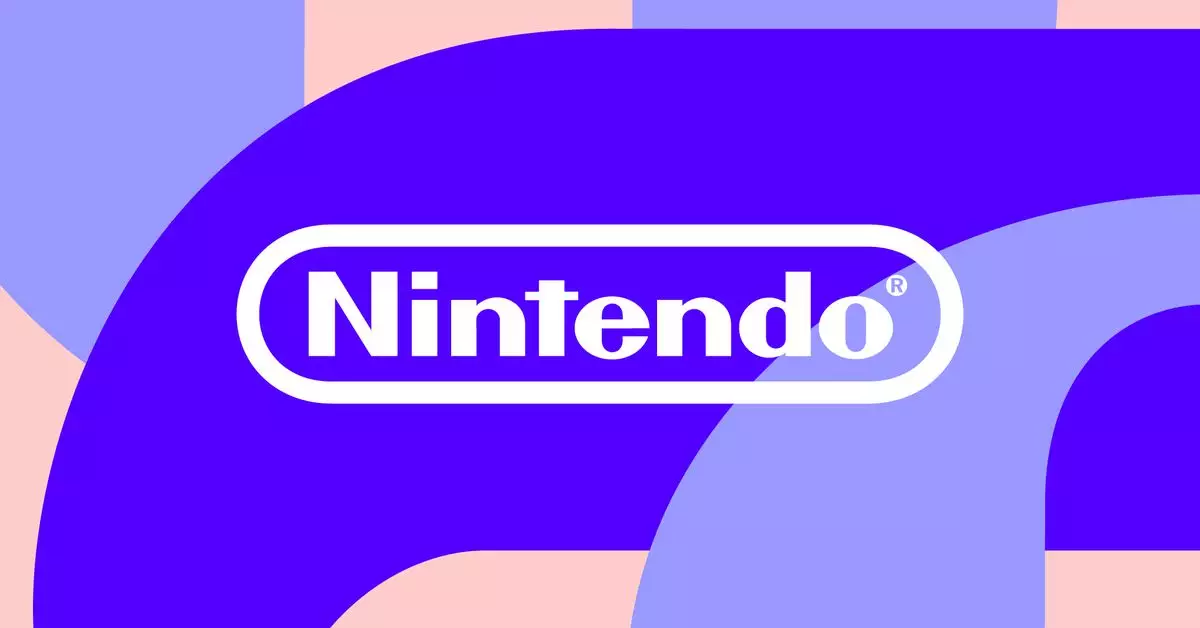In an age where streaming services dominate our listening habits, the absence of a dedicated platform for Nintendo’s extensive soundtrack has left fans yearning for a comprehensive musical experience. Jay Peters, a news editor with a penchant for technology and video games, dives into the recent launch of Nintendo Music—a mobile application tailored for Nintendo Switch Online subscribers. While this app presents intriguing features, Peters’ critique raises essential questions about its limitations, scope, and overall execution.
At first glance, the interface of Nintendo Music mirrors established platforms like Spotify and Apple Music. Users can explore a myriad of game soundtracks, curated playlists, and genre-specific collections. The organization is commendable, with each game receiving its unique section. For instance, Animal Crossing: New Horizons delights with curated lists showcasing K.K. Slider’s iconic performances. The inclusion of fictional bands from Splatoon further enriches the app, as they receive dedicated artist pages complete with bios.
However, beneath this appealing structure lies a slew of frustrations that Peters highlights. While connecting with Nintendo’s musical universe through recognizable tunes is undeniably enjoyable, the limited number of game soundtracks available can be disheartening. With a history that spans over four decades, the expectation for a more extensive collection is reasonable. Instead, users are met with a mere snippet of what could have been—a staggering lack of representation from beloved franchises such as Super Mario, Metroid, and others.
At the core of Peters’ critique is the glaring absence of key titles in the app’s library. With only 25 games represented, the nostalgia-inducing soundtracks of classics such as Super Mario World are conspicuously missing. The two available Zelda entries—Breath of the Wild and Ocarina of Time—barely scratch the surface of a rich musical heritage spanning decades. Moreover, the representation of older games like those on the Game Boy Advance is alarmingly narrow. For many fans and newcomers alike, this lack of variety in choice renders the initial experience somewhat lacking.
The potential for content expansion is hinted at, as Nintendo plans to gradually add more titles. Recent updates have included soundtracks from Super Mario Bros. Wonder and Donkey Kong Country 2: Diddy’s Kong Quest. However, the vague timeline for future updates raises concerns about how quickly users might see their favorite tracks make an appearance. There is an underlying tension between the anticipation of new content and the fear of being left with a collection that remains inadequate for long periods.
An array of design choices has left users questioning the app’s functionality. Peters notes the intriguing feature that allows certain tracks to be extended for longer loops, turning short themes into a soothing backdrop for concentration or relaxation. Yet, some tracks—like the deeply atmospheric “Phendrana Drifts” from Metroid Prime—are inexplicably excluded from this feature.
The app also falters with its music playback mechanics. Users experience annoying interruptions when attempting to extend tracks, as the song restarts from the beginning rather than smoothly transitioning into the extended version. This type of user experience oversight can detract significantly from what should be an immersive listening environment.
Furthermore, the current lack of a desktop application is a notable drawback for those who prefer listening from a computer. The absence of compatibility with in-car systems like CarPlay or Android Auto further limits the convenience that modern listening habits demand.
The Bigger Picture: A Reflection on Nintendo’s Strategy
Peters’ analysis presents a critical view of Nintendo Music, shedding light on its shortcomings while also acknowledging the app’s potential. The app appears to be a half-hearted attempt to establish a dedicated musical hub for Nintendo fans, lacking the depth that such a rich musical legacy deserves. For Nintendo enthusiasts, the dream of an expansive music library—a platform that acknowledges the contributions of legendary figures like Koji Kondo—remains unfulfilled.
As we reflect on Nintendo Music, it’s important to consider whether this service represents a stepping stone toward something more robust, possibly in anticipation of future consoles or gaming ventures. Nevertheless, the mixed reception of the app evokes a sense of urgency for Nintendo to elevate this platform beyond its current limitations—ensuring that fans have an accessible and comprehensive method to immerse themselves in the delightful soundscapes of their favorite games.
While Nintendo Music opens the door to a unique auditory experience, it leaves listeners yearning for more content, features, and accessibility. The current offering may provide a taste of nostalgia, but for many, it feels like just a glimpse into a world that has yet to be fully realized. Until Nintendo takes decisive steps to enrich this platform, many fans will continue to scour YouTube in search of their cherished game soundtracks, reminding us all that the legacy of Nintendo’s music deserves more than a passing nod—it deserves a dedicated and robust celebration.


Leave a Reply